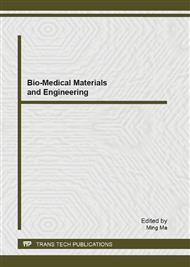p.44
p.49
p.54
p.60
p.65
p.71
p.77
p.82
p.87
Influence of Intumescent Flame Retardant on Flammability and Tensile Behavior of Oil-Extended SEBS
Abstract:
A kind of intumescent flame retardant (IFR) were used for flame retarding of oil-extended hydrogenated styrene-butylenes-styrene (O-SEBS). The samples were systemically characterized by limited oxygen index (LOI), vertical burning test (UL-94), and scanning electron microscopy (SEM); Thermogravimetric (TG) analysis. The results showed that the IFR retardant can promote residual chars with multi-micro holes on the surface of SEBS to inhibit flame; with 45% IFR content, the LOI is 28.3 and flame retardant level is UL-94 classification of V-0, with no dripping. The morphological structures observed by SEM demonstrated that higher IFR content promote to form larger and compact films cover on bubbles of the intumescent char layer. The TG data revealed that the IFR could change the degradation behavior of the O-SEBS, enhance the thermal stability and increase the char residue, The tensile strength of all the O-SEBS/IFR blends had the tensile strength of more than 4MPa and the elongation of more than 850%.
Info:
Periodical:
Pages:
65-70
Citation:
Online since:
August 2013
Authors:
Keywords:
Price:
Сopyright:
© 2013 Trans Tech Publications Ltd. All Rights Reserved
Share:
Citation:


